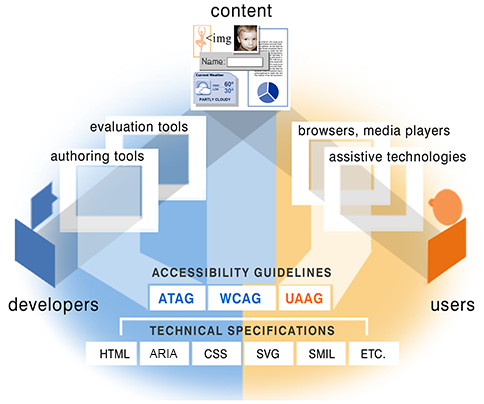Web accessibility refers to the inclusive practice of designing websites and digital content that can be accessed and used by individuals with various disabilities. It is an essential aspect of web development that aims to eliminate barriers and ensure equal access and participation for all users, regardless of their abilities.
Importance of Web Accessibility
Web accessibility is crucial as it promotes inclusivity, equality, and non-discrimination on the internet. Just like physical spaces should be accessible for individuals with disabilities, online platforms should also be designed with accessibility in mind. By adhering to web accessibility standards, developers can create websites that are user-friendly for everyone and provide equal opportunities for engagement and interaction.
Web Accessibility Standards and Guidelines
There are several organizations that have developed standards and guidelines to assist developers in implementing web accessibility. The most prominent ones include:
Web Content Accessibility Guidelines (WCAG)
WCAG, developed by the World Wide Web Consortium (W3C), is the most widely accepted and recognized set of guidelines for web accessibility. It provides a comprehensive framework for creating accessible web content and covers various aspects such as perceivability, operability, understandability, and robustness.
Section 508
Section 508 is a US federal law that requires federal agencies to make their electronic and information technology accessible to individuals with disabilities. It provides specific accessibility standards for different types of technology, including websites. Although it primarily applies to US government agencies, it has influenced accessibility standards worldwide.
Accessible Rich Internet Applications (ARIA)
ARIA is a set of attributes that can be added to HTML elements to improve their accessibility for users with disabilities. It allows developers to provide additional information or functionality to assistive technologies, enhancing the overall accessibility and usability of web content.
Implementing Web Accessibility
Implementing web accessibility involves considering various elements of a website and making them accessible to users with disabilities. Below are some key aspects to consider:
1. Semantic HTML Markup
Using semantic HTML markup is an essential aspect of web accessibility. It allows screen readers and assistive technologies to understand the content and provide an accurate representation to users. Developers should use appropriate HTML tags for headings, paragraphs, lists, and other elements to ensure clear and meaningful structure.
2. Alternative Text for Images
Images play a significant role in web design, but individuals with visual impairments cannot perceive them. By providing alternative text, or alt text, developers can describe the content of an image for screen readers. Alt text should be concise and descriptive, conveying the purpose or key information of the image.
3. Keyboard Accessibility
Many individuals with disabilities rely on a keyboard for browsing, rather than a mouse or touchpad. Therefore, it is essential to ensure that all interactive elements on a website, such as links, buttons, and forms, can be accessed and operated solely through the keyboard. Developers should test the website’s keyboard accessibility and ensure proper focus is maintained when navigating through different elements.
4. Color Contrast
Proper color contrast is crucial for individuals with low vision or color blindness to perceive content. Developers should choose color combinations that provide sufficient contrast between text and background elements. WCAG provides specific guidelines for color contrast ratios that must be met for a web page to be considered accessible.
5. Video and Audio Accessibility
Video and audio content should be made accessible through captions, transcripts, and audio descriptions. Captions allow individuals with hearing impairments to follow the dialogue, while transcripts provide a textual version of the content. Audio descriptions are essential for individuals with visual impairments, as they describe the visual elements and actions happening within a video.
6. Forms and Error Handling
Forms should be designed for easy completion, especially for individuals with cognitive disabilities or motor impairments. Developers should include clear instructions, error messages, and form validation to guide users through the process. Additionally, individuals should be given adequate time to complete forms without arbitrary time limits.
Conclusion
Web accessibility is a vital aspect of modern web development, ensuring equal access and usability for individuals with disabilities. By following established standards and guidelines, developers can create inclusive websites that cater to a diverse range of users. Implementing web accessibility not only benefits individuals with disabilities but also enhances the overall user experience for all visitors.


